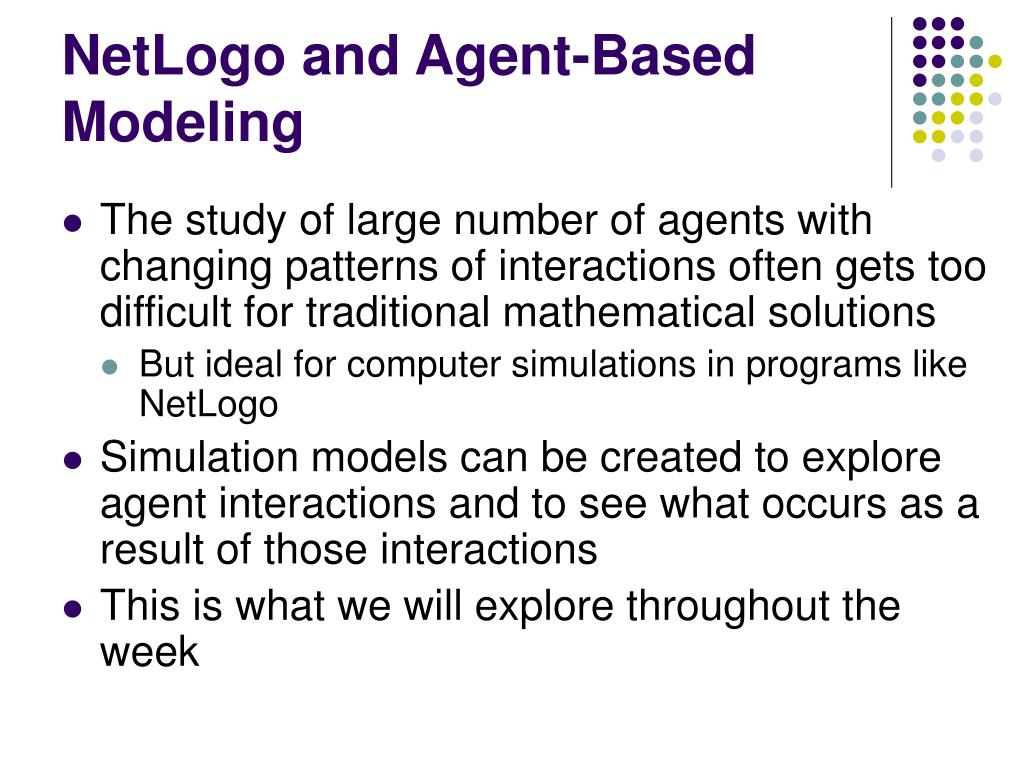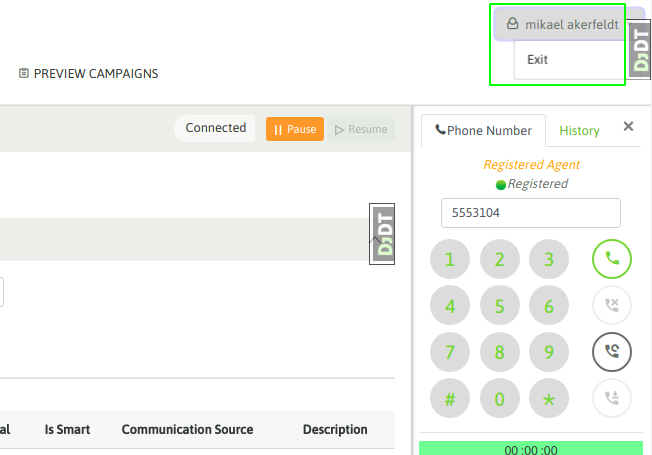
Agentset netlogo Patch#
Which is also faster because it will only engage with turtles (who, by definition, are standing on a patch) rather than engaging with every patch even if there are no turtles on it.

Or, given that turtles can automatically read and change the patches-own variables of the patch they are standing on, you can make it even simpler: to computingFrequency Therefore, you can achieve your goal by individually asking every turtle on the patch to append their who to visitantBees: to computingFrequency For example, of turtle 0 is just its color, not a list containing a color. not a list (unless that value is a list in itself, of course). On the other hand, when you ask a single agent to report one of its variables, you get the value as such, i.e. And anything that is fit to contain multiple agents has to be an agentset. create agentset netlogotriangle business journal phone number. So, why is turtles-here an agentset? Because, even if sometimes turtles-here can contain 0 or 1 turtle, it can also contain multiple turtles. create agentset netlogomercury levels in lake superior fish. For example, if you wanted to know of turtles, the only way NetLogo has to give you this information is to put all the turtles' colors in a list. While visitantBees is a list because you set it as a list, why is of turtles-here a list? Because turtles-here is an agentset - and the only way to report a variable of an agentset is to create a list. show (turtle-set turtle 0 turtle 2 turtle 9 turtles-here). Any help would be really appreciated.The reason why you get a list of lists is that both visitantBees and of turtles-here are lists. Use of to make a list of values, one for each agent in the agentset. I thought this would be easy but I've been stumped most of the day on this. I use print statements to verify this and included a simple error message using the following: if of unchallenged-males = of dominant-males However, I often find that the unchallenged-males are the same ones that had been challenged before and won (i.e., dominant-males), even though those males should not have been selected in the first place. Let male-to-challenge one-of unchallenged-males select one of the unchallenged males to challenge:

Let unchallenged-males owner-males-of-nearby-fem with Links are agents that connect two turtles. Each patch is a square piece of ground over which turtles can move. The world is two dimensional and is divided up into a grid of patches. Turtles are agents that move around in the world. identify those males who have not been challenged before: In NetLogo, there are four types of agents: turtles, patches, links, and the observer. Let owner-males-of-nearby-fem turtle-set of breeding-females with I thought that would be easy enough with: identify those males owning nearby females: Then at the beginning of the procedure in the next time step, the dispersing male won't challenge the same dominant-male again. I accomplish this with set dominant-males (turtle-set dominant-males male-to-challenge) at the end of the procedure.

When a dispersing male challenges a resident male (i.e., male-to-challenge) and loses, I’d like to have the dispersing male ‘remember’ who he lost to.

I have a model of male and female animals interacting, with males competing with each other for access to females.


 0 kommentar(er)
0 kommentar(er)
